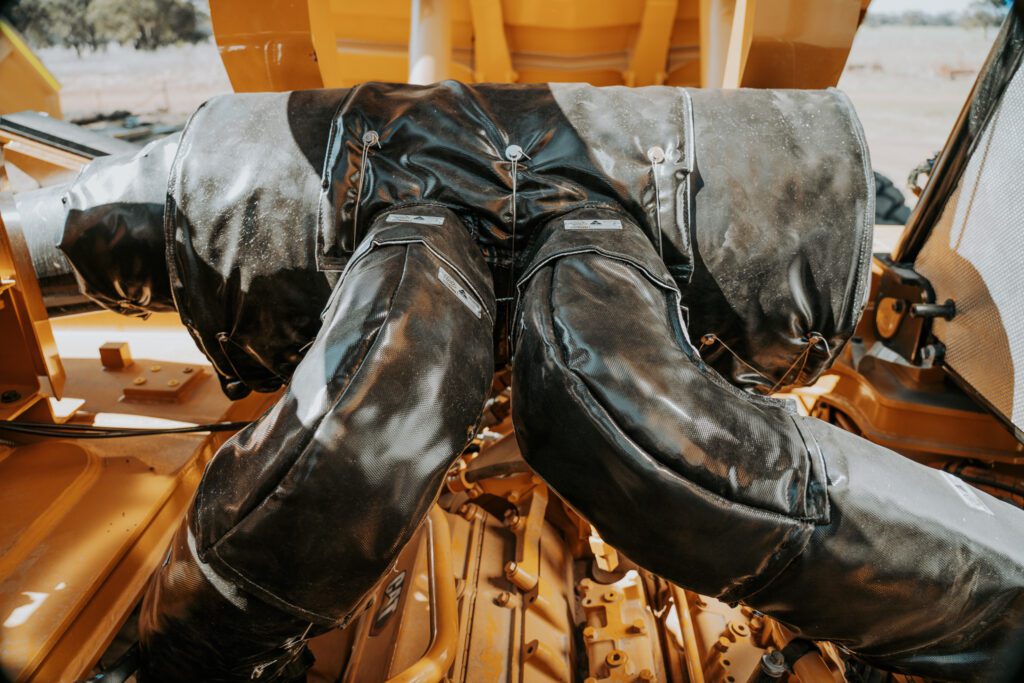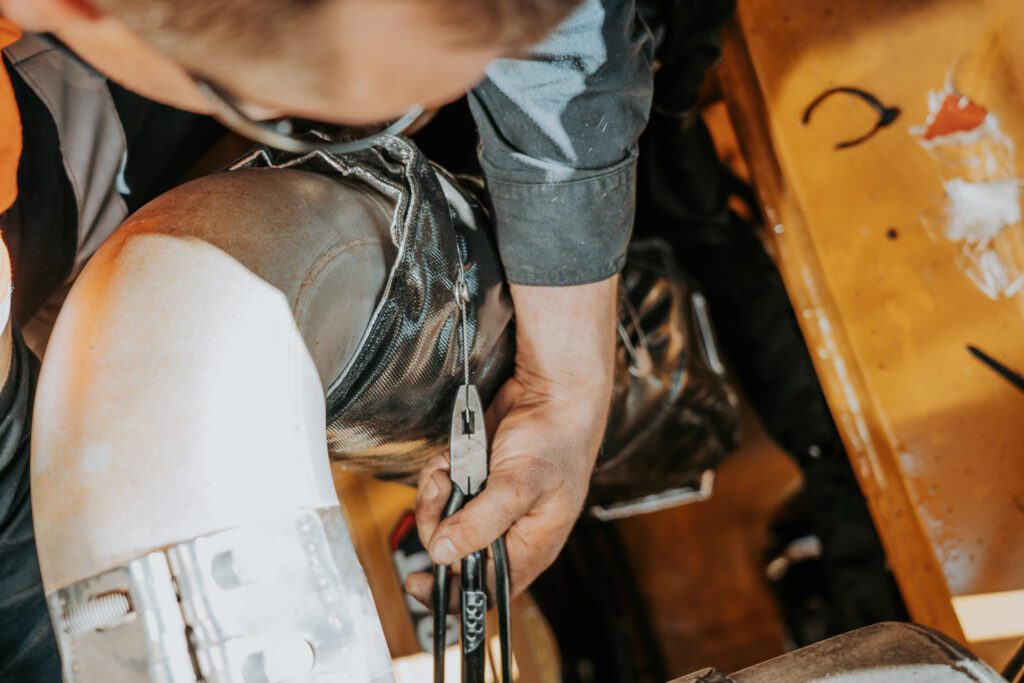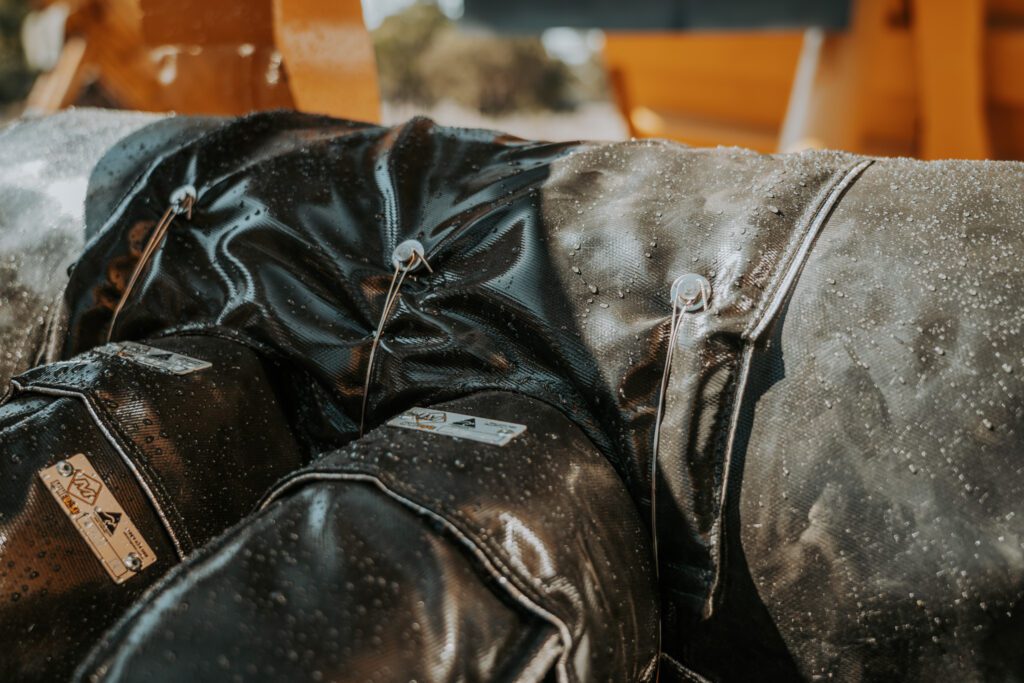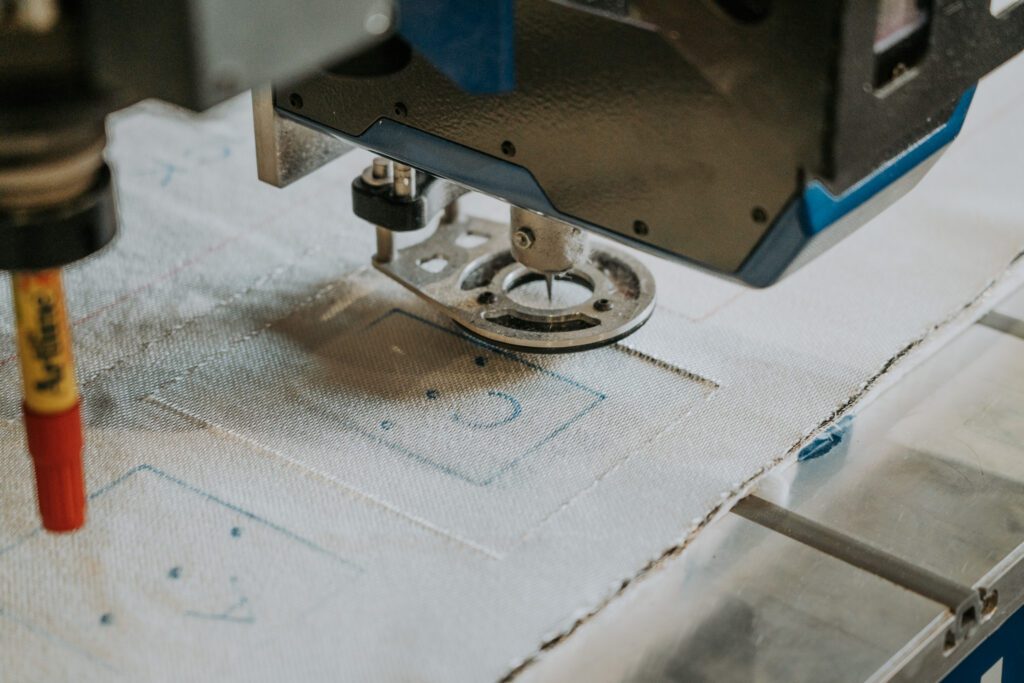Shop Menu
🚀 5% OFF Your First Order. Use Code FIRSTORDER5 🚀
are your thermal insulation blankets compliant?

Thermal Insulation Blankets (Lagging) is a Mine site requirement to control surface temperatures of manifolds, turbos, exhaust pipes and mufflers.
There is often confusion about the purpose of Lagging, a lot of people still believe that it is so operators don’t burn their hands if they touch an engine bay.
The real purpose of Lagging is to keep engine bays cool so the machine doesn’t overheat.
Our MineBase Lagging also acts as a protective shield if a fuel line bursts and spills oil throughout the engine bay.
bear with us while we explain the compliance side of lagging

Mobile equipment fires bulletin – lagging and engine guidelines
Lagging related fire causes from the report:
- Trucks and Dozers – turbo fires due to mechanical failure and cracked oil feeds, oil-soaked lagging.
- Drill rigs – lack of engine shielding / thermal fire protection.
- Rupturing of hydraulic hoses or fuel lines causes turbo fires.
- 20% of fires started after maintenance, eg. reinstalling oil-soaked lagging or hotspots from the poor lagging fitment.

MDG 15 Guidelines (NSW) – resources regulator
The surface temperature of the engine system should be controlled to eliminate hot surface ignition of fuels such as escaped hydraulic oil, diesel fuel and engine coolant.
https://www.resourcesregulator.nsw.gov.au/sites/default/files/documents/mdg-15-guideline-for-mobile-and-transportable-plant-for-use-at-mines-other-than-underground-coal-mines-2020-version.pdf
4.4.1. Surface temperature control
- AS 5062 provided guidance on minimising the risk of heat sources and fires initiated in mobile plants.
- Commonly, the highest temperature areas are exhaust manifolds, turbocharger exhaust side housings and exhaust pipes and mufflers.
NSW Resources Regulator 37
- Surface temperature control methods may include insulating, lagging and water jacketing (e.g. in marine or group 2 protected engines) Implementation of new controls should not introduce other hazards of equal or greater risk.
- Any change in engine heat arrangements should be made in consultation with the engine manufacturer so all issues are understood.
- The addition of soundproofing around the engine compartment may create additional heat requirements, raising the fire risk.
The maximum operating surface temperature of the engine and ancillary components should be measured and recorded.
4.4.4 Pipes and Hoses
(C) An effective shielding should be considered between the pipe/hose and any adjacent components that have operating surface temperatures of more than 150 degrees Celsius.

AS 5062:2016 – Fire Mitigation
1.10
Eliminate fuel accumulation areas. Fire risk reduction measures include thermal blankets.
2.2.1
Maintenance activities should include controls to reduce fire risks. During maintenance, inspect for (d) Missing, damaged, or poorly fitted lagging.
2.2.3
Inspect and maintain areas where combustible or flammable materials may accumulate. Included are thermal blankets.

